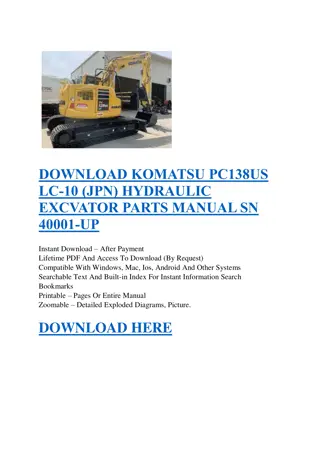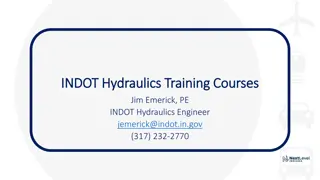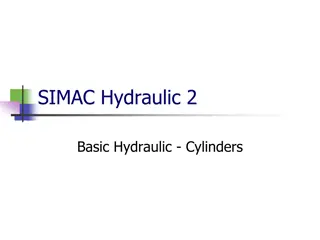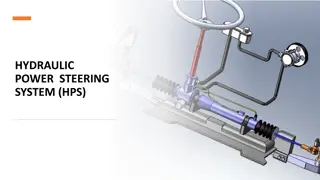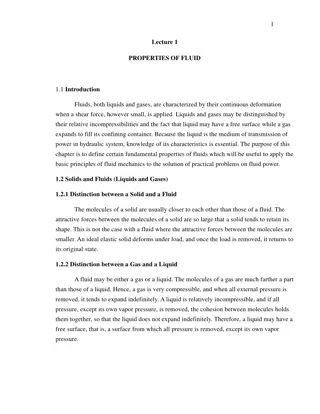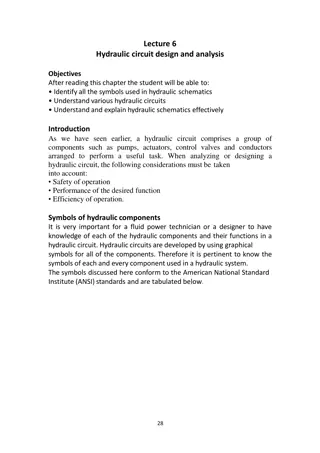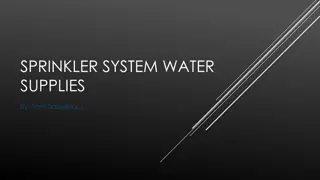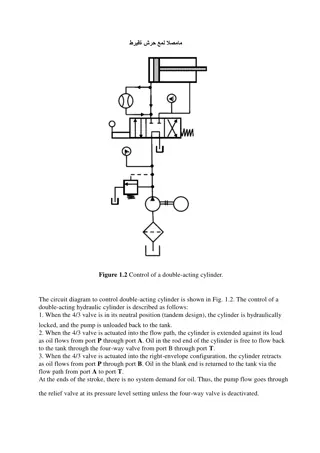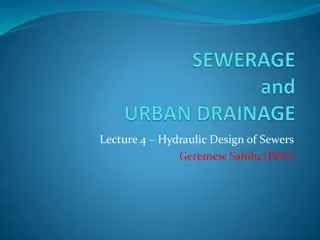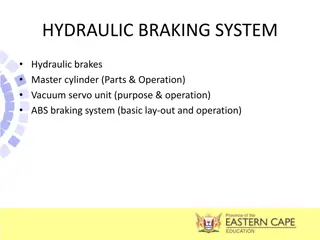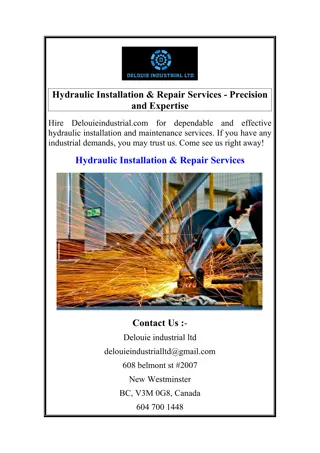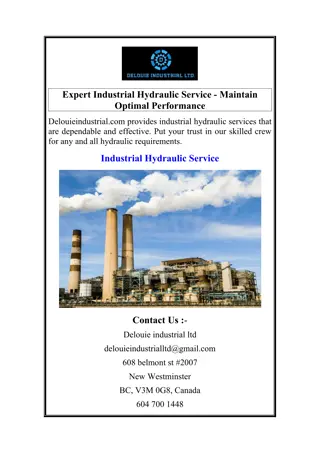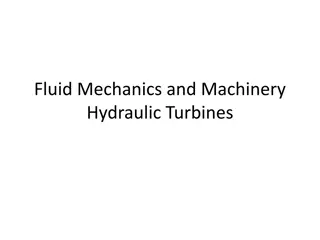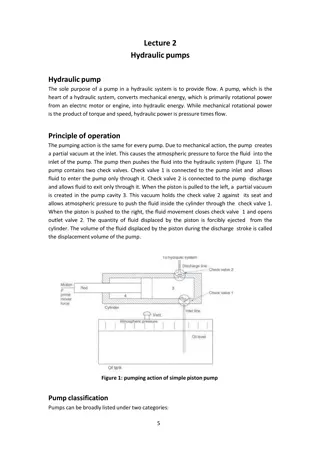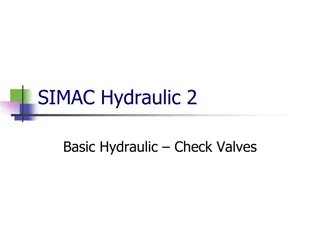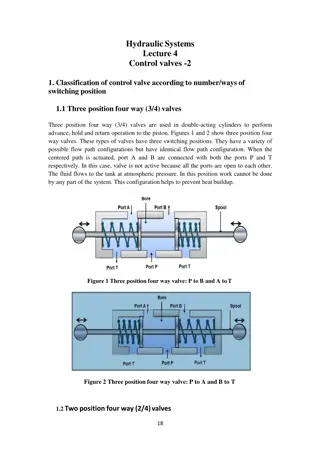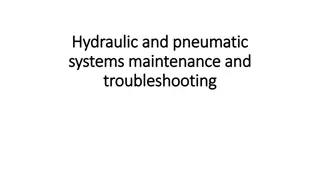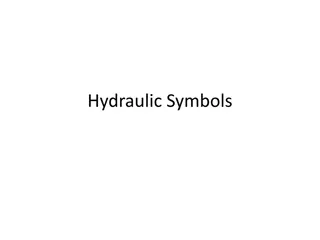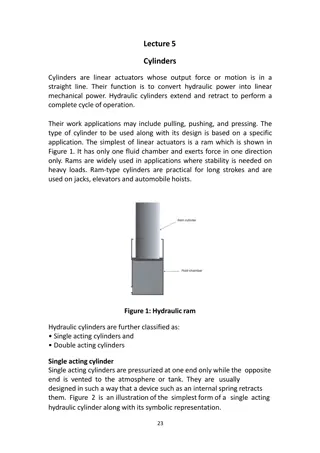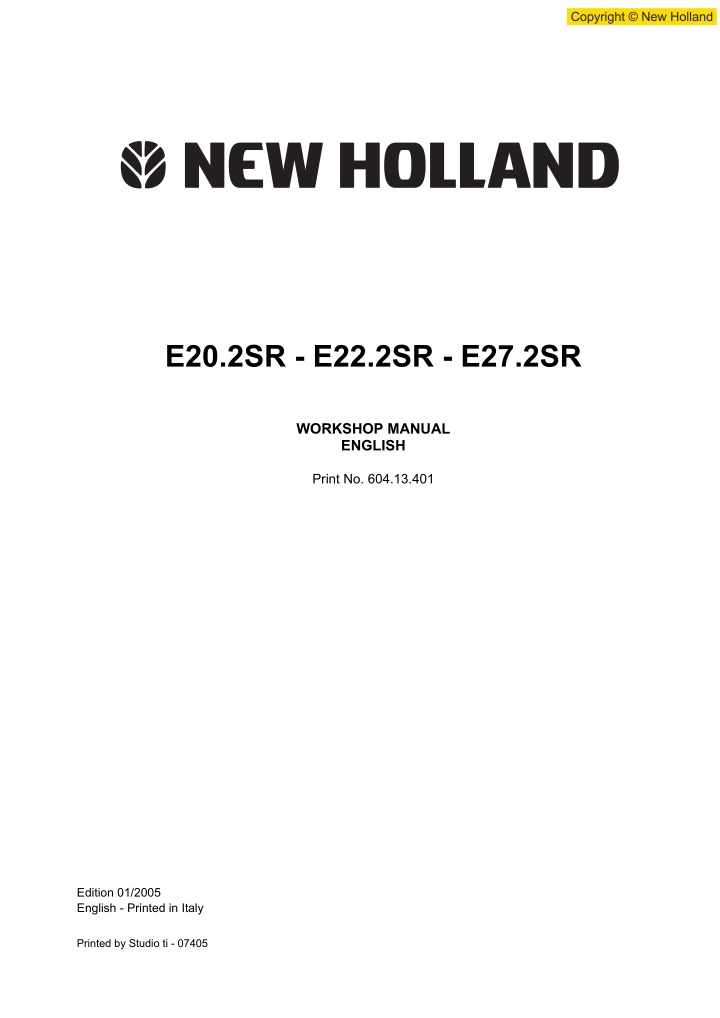
New Holland E20.2SR Hydraulic Excavator Service Repair Manual Instant Download
New Holland E20.2SR Hydraulic Excavator Service Repair Manual Instant Download
Download Presentation

Please find below an Image/Link to download the presentation.
The content on the website is provided AS IS for your information and personal use only. It may not be sold, licensed, or shared on other websites without obtaining consent from the author. If you encounter any issues during the download, it is possible that the publisher has removed the file from their server.
You are allowed to download the files provided on this website for personal or commercial use, subject to the condition that they are used lawfully. All files are the property of their respective owners.
The content on the website is provided AS IS for your information and personal use only. It may not be sold, licensed, or shared on other websites without obtaining consent from the author.
E N D
Presentation Transcript
E20.2SR - E22.2SR - E27.2SR WORKSHOP MANUAL ENGLISH Print No. 604.13.401 Edition 01/2005 English - Printed in Italy Printed by Studio ti - 07405
SAFETY PRECAUTIONS GENERAL SAFETY INFORMATION alert against possible damage to the machine and its components and is represented as fol- lows: SCAUTION SWARNING Do not operate or perform any maintenance on this machine until all instructions found in the OPERA- TION & MAINTENANCE MANUAL have been thor- oughly read and understood. Improper operation or maintenance of this machine may cause accidents and could result in serious in- jury or death. Always keep the manual in storage. If it is missing or damaged, place an order with an authorized our Distributor for a replacement. If you have any questions, please consult an au- thorized our Distributor. (4) It is very difficult to forecast every danger that may occur during operation. However, safety can be en- sured by fully understanding proper operating pro- cedures for this machine according to methods recommended by Manufacturer. (5) While operating the machine, be sure to perform work with great care, so as not to damage the ma- chine, or allow accidents to occur. (6) Continue studying the manual until all Safety, Oper- ation and Maintenance procedures are completely understood by all persons working with the ma- chine. (1) Most accidents, which occur during operation, are due to neglect of precautionary measures and safe- ty rules. Sufficient care should be taken to avoid these accidents. Erroneous operation, lubrication or maintenance services are very dangerous and may cause injury or death of personnel. Therefore all precautionary measures, NOTES, DANGERS, WARNINGS and CAUTIONS contained in the man- ual and on the machine should be read and under- stood by all personnel before starting any work with or on the machine. (2) Operation, inspection, and maintenance should be carefully carried out, and safety must be given the first priority. Messages of safety are indicated with marks. The safety information contained in the manual is intended only to supplement safety codes, insurance requirements, local laws, rules and regulations. (3) Messages of safety appear in the manual and on the machine: All messages of safety are identified by either word of "DANGER", "WARNING" and "CAUTION". 1) DANGER- Indicates an imminently hazardous situation which, if not avoided, will result in death or serious injury and is represented as follows: SDANGER 2) WARNING- Indicates a potentially hazardous situation which, if not avoided, could result in death or serious injury and is represented as follows: SWARNING 3) CAUTION- Indicates a potentially hazardous situation which, if not avoided, may result in mi- nor or moderate injury. It may also be used to 0-2
https://www.ebooklibonline.com Hello dear friend! Thank you very much for reading. Enter the link into your browser. The full manual is available for immediate download. https://www.ebooklibonline.com
SAFETY PRECAUTIONS SAFETY PRECAUTIONS SWARNING SWARNING The proper and safe lubrication and maintenance for this machine, recommended by Manufacturer, are outlined in the OPERATOR S MANUAL for the machine. Improper performance of lubrication or mainte- nance procedures are dangerous and could result in injury or death. Read and understand the MAN- UAL before performing any lubrication or mainte- nance. Do not operate this machine unless you have read and understand the instructions in the OPERATOR S MANUAL. Improper machine operation is dangerous and could result in in- jury or death. (6) Relieve all pressure in air, oil or water systems be- fore any lines, fittings or related items are discon- nected or removed. Always make sure all raised components are blocked correctly and be alert for possible pressure when disconnecting any device from a system that utilizes pressure. The serviceman or mechanic may be unfamiliar with many of the systems on this machine. This makes it important to use caution when perform- ing service work. A knowledge of the system and or components is important before the removal or dis- assembly of any component. Because of the size of some of the machine compo- nents, the serviceman or mechanic should check the weights noted in this manual. Use proper lifting proce- dures when removing any components. Weight of com- ponents table is shown SPECIFICATIONS. (7) Lower the bucket, dozer, or other attachments to the ground before performing any work on the ma- chine. If this cannot be done, make sure the buck- et, dozer, ripper or other attachment is blocked correctly to prevent it from dropping unexpectedly. (8) Use steps and grab handles when mounting or dismounting a machine. Clean any mud or debris from steps, walkways or work platforms before us- ing. Always face to the machine when using steps, ladders and walkways. When it is not pos- sible to use the designed access system, provide ladders, scaffolds, or work platforms to perform safe repair operations. in the section: The following is a list of basic precautions that must al- ways be observed. (1) Read and understand all Warning plates and de- cal on the machine before Operating, Maintaining or Repairing this machine. (9) To avoid back injury, use a hoist when lifting com- ponents which weigh 20 kg (45 lbs) or more. Make sure all chains, hooks, slings, etc., are in good condition and are the correct capacity. Be sure hooks are positioned correctly. Lifting eyes are not to be side loaded during a lifting operation. (2) Always wear protective glasses and protective shoes when working around machines. In partic- ular, wear protective glasses when using ham- mers, punches or drifts on any part of the machine or attachments. Use welders gloves, hood/gog- gles, apron and the protective clothing appropriate to the welding job being performed. Do not wear loose fitting or torn clothing. Remove all rings from fingers, loose jewelry, confine long hair and loose clothing before working on this machinery. (10) To avoid burns, be alert for hot parts on machines which have just been stopped and hot fluids in lines, tubes and compartments. (11) Be careful when removing cover plates. Gradually back off the last two capscrews or nuts located at opposite ends of the cover or device and carefully pry cover loose to relieve any spring or other pres- sure, before removing the last two capscrews or nuts completely. (3) Disconnect the battery and hang a "Do Not Oper- ate" tag in the Operators Compartment. Remove ignition keys. (4) If possible, make all repairs with the machine parked on a level, hard surface. Block the ma- chine so it does not roll while working on or under the machine. Hang a "Do Not Operate" tag in the Operators Compartment. (12) Be careful when removing filler caps, breathers and plugs on the machine. Hold a rag over the cap or plug to prevent being sprayed or splashed by liquids under pressure. The danger is even greater if the machine has just been stopped be- cause fluids can be hot. (5) Do not work on any machine that is supported only by lift, jacks or a hoist. Always use blocks or jack stands, capable of supporting the machine, before performing any disassembly. (13) Always use the proper tools that are in good con- dition and that are suited for the job at hand. Be 0-3
SAFETY PRECAUTIONS been damaged or altered should be checked for balance before reusing. sure you understand how to use them before per- forming any service work. (22) Be careful when servicing or separating the tracks (crawlers). Chips can fly when removing or install- ing a track (crawlers) pin. Wear safety glasses and long sleeve protective clothing. Tracks (crawlers) can unroll very quickly when separated. Keep away from front and rear of machine. The ma- chine can move unexpectedly when both tracks (crawlers) are disengaged from the sprockets. Block the machine to prevent it from moving. (14) Reinstall all fasteners with the same part number. Do not use a lesser quality fastener if replace- ments are necessary. (15) Repairs which require welding should be per- formed only with the benefit of the appropriate ref- erence information and by personnel adequately trained and knowledgeable in welding proce- dures. Determine type of metal being welded and select correct welding procedure and electrodes, rods or wire to provide a weld metal strength equivalent at least to that of the parent metal. Make sure to disconnect battery before any weld- ing procedures are attempted. (16) Do not damage wiring during removal operations. Reinstall the wiring so it is not damaged nor will be damaged in operation of the machine by contact- ing sharp corners, or by rubbing against some ob- ject or hot surface. Do not connect wiring to a line containing fluid. (17) Be sure all protective devices including guards and shields are properly installed and functioning correctly before starting a repair. If a guard or shield must be removed to perform the repair work, use extra caution and replace the guard or shield after repair is completed. (18) The maintenance and repair work while holding the bucket raised is dangerous due to the possibil- ity of a falling attachment. Don t fail to lower the at- tachment and place the bucket to the ground be- fore starting the work. (19) Loose or damaged fuel, lubricant and hydraulic lines, tubes and hoses can cause fires. Do not bend or strike high pressure lines or install ones which have been bent or damaged. Inspect lines, tubes and hoses carefully. Do not check for leaks with your hands. Very small (pinhole) leaks can re- sult in a high velocity oil stream that will be invisi- ble close to the hose. This oil can penetrate the skin and cause personal injury. Use card-board or paper to locate pinhole leaks. (20) Tighten connections to the correct torque. Make sure that all heat shields, clamps and guards are installed correctly to avoid excessive heat, vibra- tion or rubbing against other parts during opera- tion. Shields that protect against oil spray onto hot exhaust components in event of a line, tube or seal failure must be installed correctly. (21) Do not operate a machine if any rotating part is damaged or contacts any other part during opera- tion. Any high speed rotating component that has 0-4
SAFETY PRECAUTIONS INDEX E20.2SR E22.2SR E27.2SR Title Index No. SPECIFICATIONS 1 OUTLINE 2 SPECIFICATIONS 3 ATTACHMENT DIMENSIONS 11 TOOLS MAINTENANCE 12 STANDARD MAINTENANCE TIME TABLE 13 MAINTENANCE STANDARDS AND TEST PROCEDURES 22 HYDRAULIC SYSTEM SYSTEM 23 ELECTRICAL SYSTEM 24 COMPONENTS SYSTEM 31 WHOLE DISASSEMBLING & ASSEMBLING DISASSEMBLING 32 ATTACHMENTS 33 UPPER SLEWING STRUCTURE 34 TRAVEL SYSTEM TROUBLESHOOTING 42 HYDRAULIC SYSTEM 43 ELECTRICAL SYSTEM 44 ENGINE 51 E/G ENGINE OPT. DATA 71 SUPPORTING DATA APPLICABLE MACHINES 0-5
SAFETY PRECAUTIONS NOTE: This Manual may be properly revised due to the im- provement of products, modification of specifications, etc. And there are cases where the system on actual machine and a part of the contents of this manual may differ due to the variations of specification by countries. For the section in which the description is hardly under- stood, contact our distributor. This Manual is prepared as a technical material in which the information necessary for the maintenance and repairing services of our hydraulic excavators are collected, and is categorized into 8 Chapters, Specifica- tion, Maintenance, System, Disassembly, Trouble- shooting, Engine, and Installation Procedures for Optional Attachment, and Supporting Data. The number is assigned to every part handled in this Manual on account of the description, but the parts, which cannot be supplied as service parts are con- tained. Therefore, the order must be placed with re- spective formal number with due confirmation on the Parts Manual for applicable machine. The Chapter "Specification" describes the specifi- cations for entire machine and material, which are instructive for replacement and repairing of attach- ments. The Chapter "Maintenance" describes the material, which is helpful for maintenance service and adjust- ments for entire machine. The Chapter "System" describes the operating sys- tem like hydraulic system, electric system, compo- nents, and so on. The Chapter "Disassembly" describes the removal and installing of assembly mounted on the upper structure and undercarriage, and the assembling and disassembling of the associated hydraulic equipment. The Chapter "Troubleshooting" describes how to find the fault equipment. The Chapter "Engine" describes the engines mak- ing use of the "Maintenance Manual" provided by the suppliers. The Chapter "Installation Procedures for Optional Attachment" describes the supplements added on request as required. The Chapter "Supporting Data" describes the con- tents of added material in A3 size like hydraulic cir- cuit diagram, electric circuit diagram, and so on. It is recommended to use together with the texts in re- spective Chapter and Section. 0-6
1. OUTLINE TABLE OF CONTENTS 1.1 GENERAL PRECAUTIONS FOR REPAIRS .....................................................1-3 1.1.1 PREPARATION BEFORE DISASSEMBLING ..............................................1-3 1.1.2 SAFETY IN DISASSEMBLING AND ASSEMBLING ....................................1-3 1.1.3 DISASSEMBLING AND ASSEMBLING HYDRAULIC EQUIPMENT ............1-3 1.1.4 ELECTRICAL EQUIPMENT ..........................................................................1-4 1.1.5 HYDRAULIC PARTS .....................................................................................1-5 1.1.6 WELDING REPAIR .......................................................................................1-5 1.1.7 ENVIRONMENTAL MEASURE .....................................................................1-5 1.2 INTERNATIONAL UNIT CONVERSION SYSTEM ...........................................1-6
1. OUTLINE 1.1 GENERAL PRECAUTIONS FOR REPAIRS (2) Suspend warning tag "DO NOT OPERATE" from the doorknob or the operating lever, and have a preliminary meeting before starting work. 1.1.1 PREPARATION BLING BEFORE DISASSEM- (3) Stop the engine before starting inspection and maintenance to prevent the operator being caught in machine. (4) Identify the location of a first-aid kit and a fire extin- guisher, and also where to make contact in a state of emergency. (1) Understanding operating procedure Read OPERATION & MAINTENANCE MANUAL carefully to understand the operating procedure. (5) Choose a hard, level and safe place, and place the attachment on the ground securely. (2) Cleaning machines Remove soil, mud, and dust from the machine be- fore carrying it into the service shop to prevent loss of work efficiency, damage of parts, and difficulty in rust prevention and dust protection while reassem- bling. (6) Use a lifter such as a crane to remove heavy parts (20 kg [45 lbs] or more) from the machine. (7) Use proper tools, and replace or repair defective tools. (8) Support the machine and attachment with supports or blocks if the work is performed in the lifted condi- tion. (3) Inspecting machines Identify the parts to be disassembled before start- ing work, determine the disassembling procedure by yourself considering the workshop situations etc., and request procurement of necessary parts in advance. 1.1.3 DISASSEMBLING AND ASSEMBLING HY- DRAULIC EQUIPMENT (4) Recording Record the following items for communication and prevention of recurring malfunction. (1) Removing hydraulic equipment 1) Before disconnecting pipes, release the hy- draulic pressure of the system, or open the re- turn side cover and take out the filter. 1) Inspection date and place 2) Model name, applicable machine number, and hour meter read 2) Carefully drain oil of the removed pipes into a containers without spilling on the floor. 3) Trouble condition, place and cause. 3) Apply plugs or caps on the pipe ends to avoid oil spillage and dust intrusion. 4) Visible oil leakage, water leakage and damage 5) Clogging of filters, oil level, oil quality, oil con- tamination and loosening of connections 4) Clean off the external surface of the equipment before disassembling, and drain hydraulic and gear oil before placing it on the workbench. 6) Result of consideration if any problem exists based on the operation rate per month calculat- ed from hour meter indication after the last in- spection date. (2) Disassembling hydraulic equipment 1) Do not disassemble, reassemble or modify the hydraulic equipment without the permission of the manufacturer, who is not responsible for the performance and function of the product after modification. (5) Arrangement and cleaning in service shop 1) Tools required for repair work. 2) Prepare space to place the disassembled parts. 3) Prepare oil containers for draining oil etc. 2) When disassembling and reassembling for un- avoidable reason, refer the work to qualified personnel who have the specific knowledge or completed the parts service training. 1.1.2 SAFETY IN DISASSEMBLING AND AS- SEMBLING 3) Provide matching marks to facilitate reassem- bling work. (1) Wear appropriate clothes with long sleeves, safety shoes, safety helmet and protective glasses. 4) Before starting the work, read the manual of disassembling procedure, if it is provided, and decide whether the work can be performed by yourself. 1-3
1. OUTLINE 5) Use the special jig and tools without fail if they are specified. SWARNING Operation of the hydraulic equipment with- out filling hydraulic oil or lubricant or with- out performing air bleeding will result in damage to the equipment. 6) If it is hard to remove a part according to the procedure, do not try it by force but investigate the cause. 7) Place the removed parts in order and attach tags to facilitate the reassembling. 3) Perform air bleeding of the hydraulic pump and slewing motor after loosening the upper drain plug, starting the engine and keep it in low idle condition. Complete the air bleeding when seeping of hy- draulic oil is recognized, and tightly plug. 8) Note the location and quantity of parts com- monly applied to multiple locations. (3) Inspecting parts 1) Ensure that the disassembled parts are free from seizure, interference and uneven contact. 2) Measure and record wear condition of parts and clearance. 4) Perform air bleeding of the travel motor and the hydraulic cylinders by running the engine for more than 5 minutes at low speed without load. 3) If the problem is found in a part, repair or re- place it with a new one. SWARNING Do not allow the hydraulic cylinder to bot- tom on the stroke end just after the mainte- nance. (4) Reassembling hydraulic equipment 1) Turn ON the ventilation fan or open windows to maintain good ventilation prior to starting the cleaning of parts. 2) Perform rough and finish cleaning before as- sembling. 5) Perform air bleeding of pilot line by performing a series of digging, slewing and travel. 3) Remove washing oil by air and apply clean hy- draulic or gear oil for assembling. 6) Check hydraulic oil level after placing the at- tachment to the oil check position, and replen- ish oil if necessary. 4) Always replace the removed O-rings, backup rings and oil seals with new ones by applying grease in advance. 1.1.4 ELECTRICAL EQUIPMENT 5) Remove dirt and moisture from and perform de- greasing on the surface where liquid gasket to be applied. (1) Do not disassemble electrical equipment. 6) Remove rust preventive agent from the new parts before use. (2) Handle it carefully not to drop and give a shock. 7) Fit bearings, bushings and oil seals using spe- cial jigs. (3) Turn the key OFF prior to connecting and discon- necting work. 8) Assemble the parts utilizing matching marks. (4) Disconnect the connector by holding it and press- ing the lock. Do not pull the wire to apply force to the caulking portion. 9) Ensure all the parts are completely assembled after the work. (5) Connect the connector and ensure it is completely locked. (5) Installing hydraulic equipment 1) Ensure hydraulic oil and lubricant are properly supplied. (6) Turn the key OFF prior to touching the terminal of starter or generator. 2) Perform air bleeding when: (7) Remove the ground (earth) terminal of battery when handling tools around the battery or its relay. 1. Hydraulic oil changed 2. Parts of suction side piping replaced (8) Do not splash water on the electrical equipment and connectors during machine washing. 3. Hydraulic pump installed 4. Slewing motor installed (9) Check for moisture adhesion inside the waterproof connector after pulling it out, since it is hard to re- move moisture from the connector. 5. Travel motor installed 6. Hydraulic cylinder installed 1-4
1. OUTLINE If moisture adhesion is found, dry it completely be- fore the connection. 1.1.6 WELDING REPAIR (1) Refer repair welding to qualified personnel accord- ing to the appropriate procedure. SWARNING Battery electrolyte is hazardous. Battery electrolyte is dilute sulfuric acid. Exposure of skin or eyes to this liquid will cause burning or loss of eyesight. If the exposure occurs, take the following emergen- cy measures and seek the advice of a medical spe- cialist. (2) Disconnect the ground (earth) cable of the battery before starting the repair. Failure to do so will cause damage to the electrical equipment. (3) Move away the articles in advance that may cause fire if exposed to sparks. (4) Before starting the repair of the attachment, do not fail to cover the plated surface of the piston rod with flameproof sheet to prevent it from being exposed to sparks. When skin exposed: Wash with water and soap sufficiently. When eyes exposed: Immediately wash away with city water continu- ously for more than 10 minutes. 1.1.7 ENVIRONMENTAL MEASURE (1) Run the engine at the place that is sufficiently ven- tilated. When a large amount of the liquid flows out: Neutralize with sodium bicarbonate or wash away with city water. (2) Industrial waste disposal Dispose of the following parts according to the rel- evant regulations: Waste oil and waste container Battery When swallowed: Drink a large amount of milk or water. When clothes exposed: Immediately undress and wash. (3) Precautions for handling hydraulic oil Exposure of eyes to hydraulic oil will cause inflam- mation. Wear protective glasses before handling to avoid an accident. If an eye is exposed to the oil, take the following emergency measures: 1.1.5 HYDRAULIC PARTS When an eye exposed: Immediately wash away with city water suffi- ciently till stimulative feeling vanishes. (1) O-ring Ensure O-rings have elasticity and are not dam- aged before use. When swallowed: Do not let vomit, and receive medical treatment immediately. Use the appropriate O-rings. O-rings are made of various kinds of materials having different hardness to apply to a variety of parts, such as the part for moving or fixed portion, subjected to high pressure, and exposed to corrosive fluid, even if the size is same. When skin exposed: Wash with water and soap sufficiently. (4) Others Use replacement parts and lubricants authorized as the manufacturer s parts. Fit the O-rings without distortion and bend. Always handle floating seals as a pair. (2) Flexible hose (F hose) Use the appropriate parts. Different parts are used depending on the working pressure even the size of fitting and the total length of the hose is same. Tighten the fitting at the specified torque. Ensure no kink, tension, interference nor oil leakage is recognized. 1-5
1. OUTLINE 1.2 INTERNATIONAL UNIT CON- VERSION SYSTEM (Based on MARKS STANDARD HANDBOOK FOR MECHANI- CAL ENGINEERS) (3) Derived Units Table 1-3 QUANTITY Area Volume Velocity Acceleration meter per second squared Density kilogram per cubic meter UNIT SYMBOL m2 m3 m/s m/s2 kg/m3 square meter cubic meter meter per second Introduction Although this manual includes International System of Unit and Foot-Pound System of Units, if you need SI unit, refer to the following international system of units. Given hereinafter is an excerpt of the units that are re- lated to this manual. (4) Derived Units bearing Peculiar Designations Table 1-4 QUANTITY Frequency Force Pressure and Stress Energy, Work and Quantity of heat Power Quantity of electricity Electric poten- tial difference, Voltage, and Electromotive force Quantity of static electrici- ty and Electric capacitance Electric resistance UNIT hertz newton SYMBOL Hz N FORMULA 1/s kg m/s 2 1. Etymology of SI Unites French: Le Systeme International d Unites English: International System of Units 2. Construction of SI Unit System pascal Pa N/m2 Base units Table 1-1 joule J N m Derived units of base units Table 1-2 Supplemen- tary units Table 1-2 SI units watt W J/s SI unit system Derived bearing peculiar designations Table 1-4 units coulomb C A s Derived units Prefixes of SI (n-th power of 10, where n is an integer) Table 1-5 volt V W/A (1) Base units Table 1-1 farad F C/V QUANTITY Length Mass Time Electric current Thermodynamic temperature Amount of sub- stance Luminous intensity UNIT SYMBOL m kg s A meter kilogram second ampere ohm V/A celsius degree or degree lux Celsius temperature (t+273.15)K C kelvin K Illuminance lx lm/m2 mol mol candela cd (2) Supplementary units Table 1-2 QUANTITY Plane angle Solid angle UNIT SYMBOL rad sr radian steradian 1-6
1. OUTLINE (5) Prefixes of SI Table 1-5 PREFIX giga mega kilo hecto deca deci centi milli micro nano pico SYMBOL G M k h da d c m n p MULTIPLICATION FACTORS 109 106 103 102 10 10 1 10 2 10 3 10 6 10 9 10 12 (6) Unit Conversion Table 1-6 QUANTITY Gravitational SI CONVERSION FACTOR Mass Force Torque Pressure Motive Power Revolution kg kgf kgf m kgf/cm2 kg N N m MPa 1 kgf/cm2= 0.09807 MPa 1 kgf= 9.807 N kgf m= 9.807 N m PS kW 1 PS= 0.7355 kW rpm min 1 r/min *1 *1 Units that are allowed to use. 1-7
2. SPECIFICATIONS TABLE OF CONTENTS 2.1 COMPONENTS NAME .....................................................................................2-3 2.2 MACHINE DIMENSIONS ..................................................................................2-4 2.3 SPECIFICATIONS AND PERFORMANCE .......................................................2-6 2.4 MACHINE & COMPONENTS WEIGHT (DRY) .................................................2-7 2.5 TRANSPORTATION .........................................................................................2-9 2.6 TYPE OF CRAWLER SHOES ........................................................................2-11 2.7 TYPE OF BUCKET .........................................................................................2-11 2.8 ENGINE SPECIFICATIONS ............................................................................2-13 2.8.1 SPECIFICATIONS ......................................................................................2-13 2.8.2 ENGINE PERFORMANCE CURVE ............................................................2-14
2. SPECIFICATIONS 2.1 COMPONENTS NAME 32 33 30 31 36 15 16 34 17 8 35 18 12 37 19 13 3 5 14 11 29 4 6 20 1 7 28 27 24 25 2 26 10 23 21 22 9 No. 1 5 9 13 Travel lever 17 Dozer operating lever 20 Battery 24 Idler assy 28 Dozer blade 32 Dipper cylinder 36 Bucket cylinder NAME No. 2 Oil filter 6 Muffler 10 Slewing motor 14 Safety lock lever 18 Throttle lever 21 Swivel joint 25 Lower roller 29 Dozer cylinder 33 Light 37 Bucket NAME No. 3 7 11 Swing cylinder 15 Canopy 19 Monitor panel (gauge cluster) 22 Travel motor 26 Upper roller 30 Boom 34 Dipper NAME No. 4 Reservoir tank 8 Hydraulic reservoir 12 Control valve 16 Operating lever NAME Engine Air cleaner Hydraulic pump Radiator Fuel tank 23 Slewing bearing 27 Rubber track 31 Boom cylinder 35 Link 2-3
2. SPECIFICATIONS 2.2 MACHINE DIMENSIONS Unit: mm (ft in) (1) E20.2SR (CANOPY) 170(6.7") 555 (1 9.9") 55 1400 (4 7.1") R700 (2 3.6") 610 (2 0.0") 60 (3.5") 90 (1.8") 45 3820 (12 6.4") 1670 (5 5.7") 1310 (4 3.6") 1400 (4 7.1") 700 (2 3.6") 2460 (8 0.9") (13.6") (13.6") (11.8") 250 (9.8") 345 345 300 (1 6.9") 480 1350 (4 5.1") 250 (9.8") 1490 (4 10.7") 1150 (3 9.3") 1400 (4 7.1") 1870 (6 1.6") 2260 (7 5.0") (2) E22.2SR (CAB) 170(6.7") 555 (1 9.9") 55 1400 (4 7.1") R740 (2 5.1") 610 (2 0.0") 60 (3.5") 90 (1.8") 45 3820 (12 6.4") 1710 (5 7.3") 1350 (4 5.1") 1400 (4 7.1") 740 (2 5.1") 2460 (8 0.9") (13.6") (13.6") (11.8") 300 345 345 250 (9.8") (1 6.9") 480 1350 (4 5.1") 250 (9.8") 1490 (4 10.7") 1150 (3 9.3") 1400 (4 7.1") 1870 (6 1.6") 2260 (7 5.0") 2-4
Suggest: If the above button click is invalid. Please download this document first, and then click the above link to download the complete manual. Thank you so much for reading
2. SPECIFICATIONS Unit: mm (ft in) (3) E27.2SR (CANOPY) 170(6.7") 555 (1 9.9") 55 1500 (4 11.1") R750 (2 5.5") 610 (2 0.0") 60 (3.5") 90 (1.8") 45 4130 (13 6.6") 1720 (5 7.7") 1360 (4 5.5") 1400 (4 7.1") 750 (2 5.5") 2500 (8 2.4") (13.6") (13.6") (11.8") 250 (9.8") 300 345 345 (1 8.5") 520 1440 (4 8.7") 250 (9.8") 1590 (5 2.6") 1250 (4 1.2") 1500 (4 11.1") 1980 (6 6.0") 2410 (7 10.9") (4) E27.2SR (CAB) 170(6.7") 555 (1 9.9") 55 1500 (4 11.1") R750 (2 5.5") 610 (2 0.0") 60 (3.5") 90 (1.8") 45 4130 (13 6.6") 1720 (5 7.7") 1360 (4 5.5") 1400 (4 7.1") 750 (2 5.5") 2500 (8 2.4") (13.6") (13.6") (11.8") 300 345 345 250 (9.8") (1 8.5") 520 1440 (4 8.7") 250 (9.8") 1590 (5 2.6") 1250 (4 1.2") 1500 (4 11.1") 1980 (6 6.0") 2410 (7 10.9") 2-5
https://www.ebooklibonline.com Hello dear friend! Thank you very much for reading. Enter the link into your browser. The full manual is available for immediate download. https://www.ebooklibonline.com

